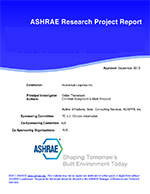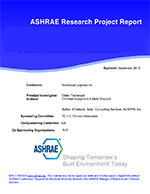Click here to purchase
Ground Source Heat Pump (GSHP) systems are known to have an enormous potential for energy savings due to their ability to achieve higher system efficiencies. Their energy-saving potential, however, varies depending on many factors, such as the appropriate design and control, regular maintenance, and the locations and types of the buildings served. A vast amount of research was focused on the design and control aspects of this type of system, but the impacts of a building itself including its type and location on the energy savings of GSHP systems are usually neglected. This paper, therefore, aims to find out the relationship between the type and location of a building and its potential energy savings when a GSHP is used through real measurements and numerical simulations. To do so, three different types of buildings that are equipped with GSHP systems in a cold climate region are studied, including a fire station, a church building, and a small office. These buildings are selected in this study by considering their distinct operating schedules, which may have a significant impact on building energy consumption and savings. Actual utility bills that were obtained from building owners are used to calibrate the numerical simulation models established for these three buildings. These calibrated models are then used to identify the potential energy savings when comparing them with baseline buildings that are equipped with conventional HVAC (Heating, Ventilation, and Air Conditioning) systems (according to the ASHRAE 90.1). The impact of building locations on energy savings is investigated by locating these three buildings from their original place (ASHRAE Climate Zone 7) to other different climate zones. The result of this study shows that “all the climate zones are suitable for the application of GSHP systems in the United States”, but the energy-saving potential of GSHP systems varies with building type and location (climate zone). Among the buildings investigated, the church building has the potential for achieving higher energy savings by using GSHP systems. This study is expected to be helpful for designers and building owners to make a decision rationally on if GSHP systems are appropriate for their projects, especially in consideration of the relatively high investment of this type of system compared to other commonly-used HVAC systems.
Citation: 2020 Virtual Conference Papers
Product Details
- Published:
- 2020
- Number of Pages:
- 14
- Units of Measure:
- Dual
- File Size:
- 1 file , 1.1 MB
- Product Code(s):
- D-VC-20-C023


